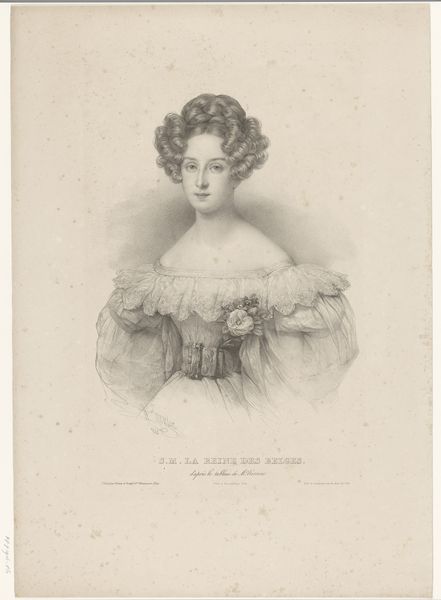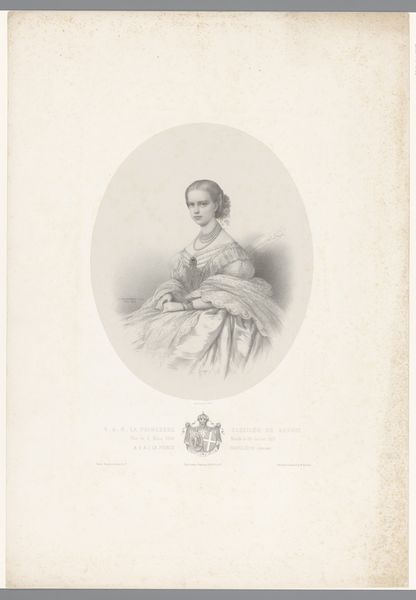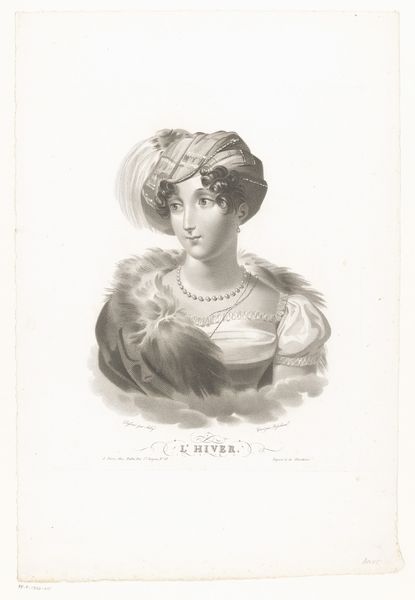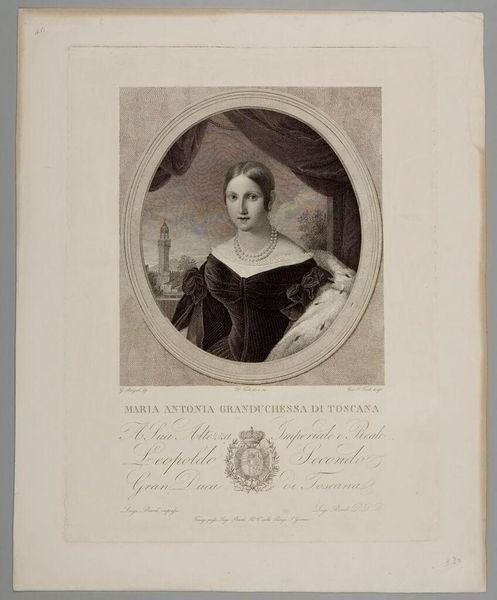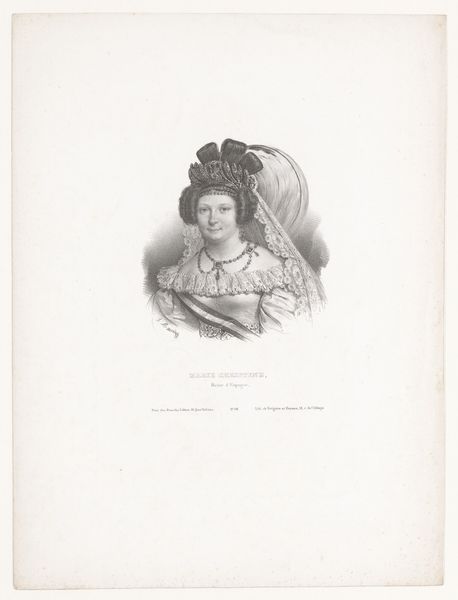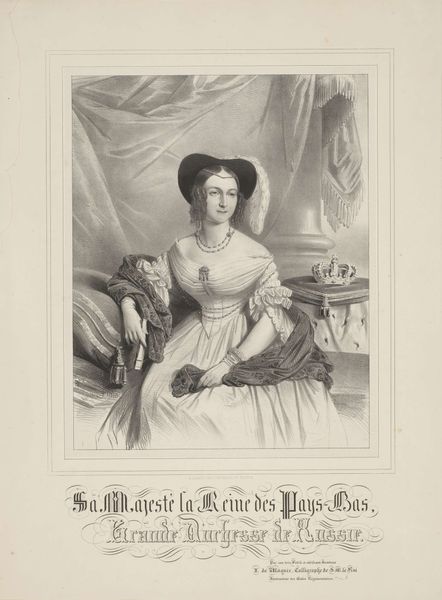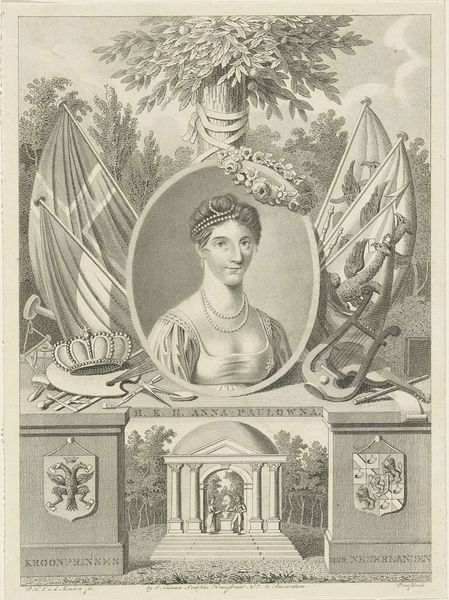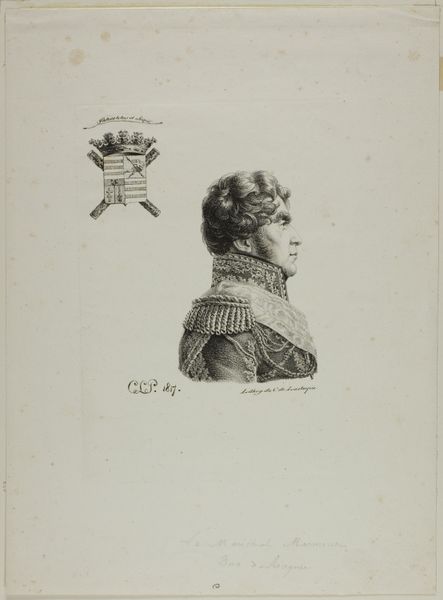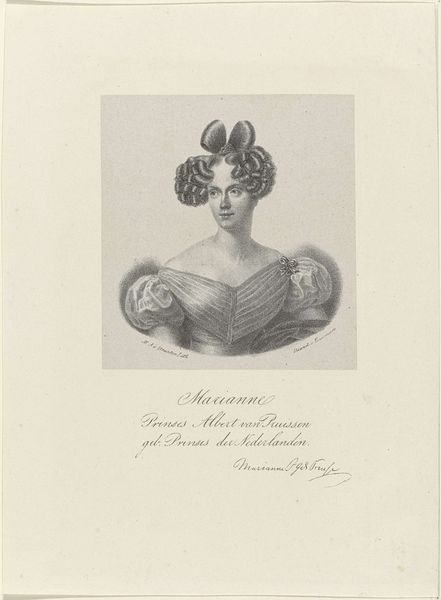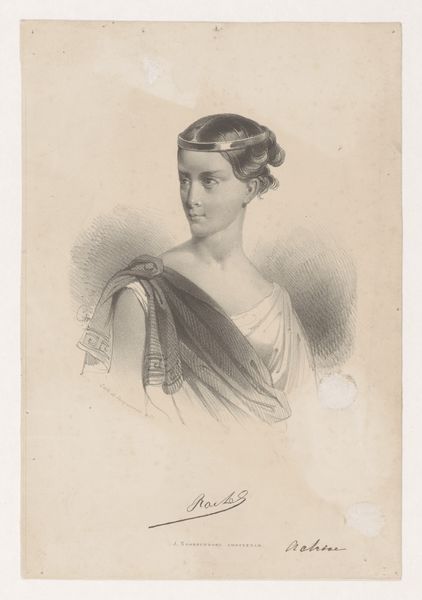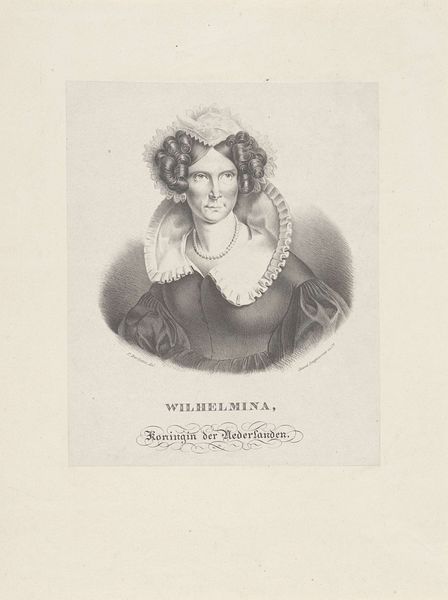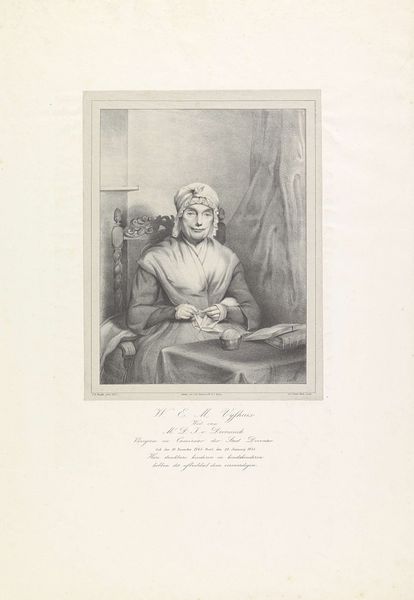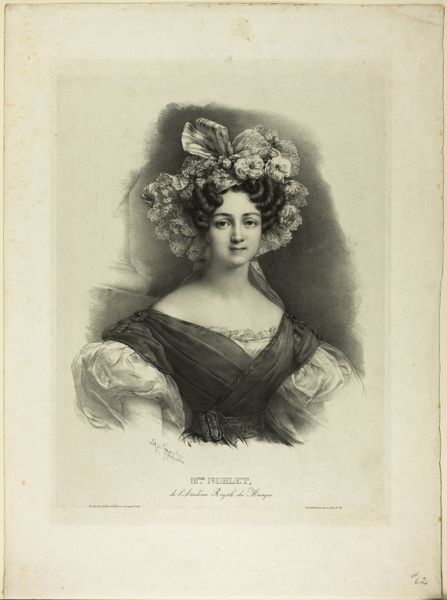
Portret van Maria Adriana van der Pot van Groeneveld 1823 - 1863
0:00
0:00
drawing, print, graphite, engraving
#
portrait
#
drawing
#
neoclacissism
# print
#
pencil drawing
#
graphite
#
engraving
Dimensions: height 424 mm, width 292 mm
Copyright: Rijks Museum: Open Domain
Editor: Here we have a portrait of Maria Adriana van der Pot van Groeneveld, created between 1823 and 1863 by Pieter Gerardus Bernhard. It seems to be an engraving or drawing, perhaps using graphite, and it has a really delicate quality. What do you see when you look at this piece? Curator: I see a fascinating record of material culture. The texture of the dress, the plumes in the hat – these elements speak volumes about the access to raw materials and the labor involved in producing such finery during this era. It's not just a pretty picture; it's a document of production and consumption. Consider also the printmaking process itself, an inherently reproductive technology making this likeness available beyond a wealthy patron. Editor: That’s a good point! It is a print, meant for wider distribution. The detailed rendering of the dress… Was the artistic value placed more on realistic representation or on the materials displayed in that era? Curator: I think it was both. Neoclassicism, with its emphasis on clean lines and realistic depiction, was a style favoured by the elite. The very act of rendering textiles and jewels with such care elevates the value of these items and by extension, the sitter's status. The means of artistic production mirrors the broader societal focus on acquiring and showcasing possessions. Editor: It's interesting to think about the image as a product of its time, reflecting social and economic realities through its very creation. Curator: Exactly. By considering the materiality and production process, we can start to unravel the complex relationships between art, labour, and consumption in 19th-century society. Editor: I never considered all the different steps involved to create the image itself as also part of the story. Curator: Indeed, every element from the paper to the ink tells a story. We see the labour in both artistic rendition as well as its effect in further reinforcing social stratifications.
Comments
No comments
Be the first to comment and join the conversation on the ultimate creative platform.

